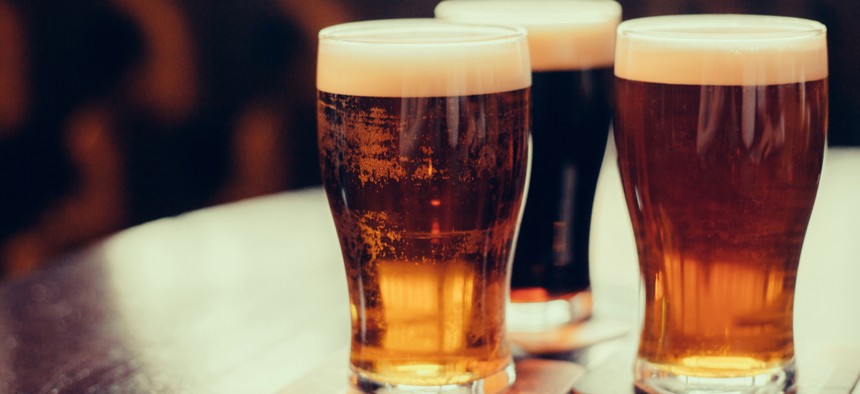NIH to Study How Much (More) Americans Are Drinking Alcohol During Pandemic

Viiviien/Shutterstock
The National Institute on Alcohol Abuse and Alcoholism contracted for a second study to get better data about how the pandemic is affecting Americans’ drinking habits.
The National Institutes of Health are pretty sure Americans on the whole are drinking more alcohol this year but want hard data on the direct effects the pandemic is having on drinking behaviors.
The year 2020 has been a tough one for just about everyone, in large part due to the ongoing COVID-19 pandemic. In response, the country has been drinking more alcohol, according to a study conducted earlier this year—and a mountain of anecdotal evidence.
But one study is not enough to confirm a trend, and NIH’s National Institute on Alcohol Abuse and Alcoholism is contracting for a second survey to expand researchers’ understanding of how the pandemic is affecting drinking trends.
NIH awarded a sole source contract worth just shy of $200,000 to Research Triangle Institute International, out of Durham, North Carolina, for a follow-up to a survey the firm conducted in May.
“The COVID-19 pandemic has led to wide-ranging changes in behavior and in commercial availability of alcoholic beverages,” according to the contract award notice. “There is a critical need to understand how these changes have affected alcohol consumption and related behaviors, both overall and in specific segments of the population.”
The institute points to a number of factors that often lead to a rise in alcohol consumption: income and employment, stress, opportunities for socializing and the availability of alcohol. Many of these factors have been in flux for many Americans this year, likely leading to more drinking.
But while it seems obvious that people would be drinking more during a pandemic, early anecdotal evidence was not as clear.
“Media reports in early April 2020 indicated that sales of alcoholic beverages had increased enormously relative to the previous year,” the document states. “However, those reports generally focused only on sales at off-premises outlets—e.g., grocery stores, liquor stores, and convenience stores—and did not account for sharp declines in sales through bars, restaurants, and other on-premises drinking establishments.”
But by July, researchers at RTI had concluded a study comparing drinking behaviors of U.S. people in February—prior to the pandemic—and April, when many states were under lockdown orders.
The survey found increased consumption across all demographics, “including females, Blacks and adults with children at home.” The results showed the largest increases were among people who already drank regularly and people who “were not drinking in excess of recommended guidelines” pre-pandemic.
However, while this survey offers some data for NIH to work off of, “findings from a single survey can be misleading … and generally cannot support strong conclusions pertaining to cause-and-effect relationships,” the document notes.
In order to get more data—and more specific data—on Americans’ alcohol consumption, the institute issued the sole source contract to RTI for a follow-up study.
“The purpose of this acquisition is to (1) re-survey an internet panel of approximately 993 persons that was previously surveyed by RTI International over May 8-15, 2020 to assess how alcohol consumption levels and patterns have changed over the course of the pandemic period, and (2) to analyze the data from both surveys to identify trends, characteristics of persons or populations at risk, and the determinants and consequences of drinking behaviors in the pandemic context,” the award notice states.
“The findings will help to inform areas where additional prevention, treatment, and research resources are most needed.”
The final product—a written report—will include the results of the new survey, broken down and analyzed independently and compared with the results from May.
The report will include details on the amount of alcohol people are drinking and how it has fluctuated prior to and during the pandemic. The report will also break the results down by subgroups, including gender, race, ethnicity, age, employment status, presence of children in the home, mental health, previous addiction issues and more.






